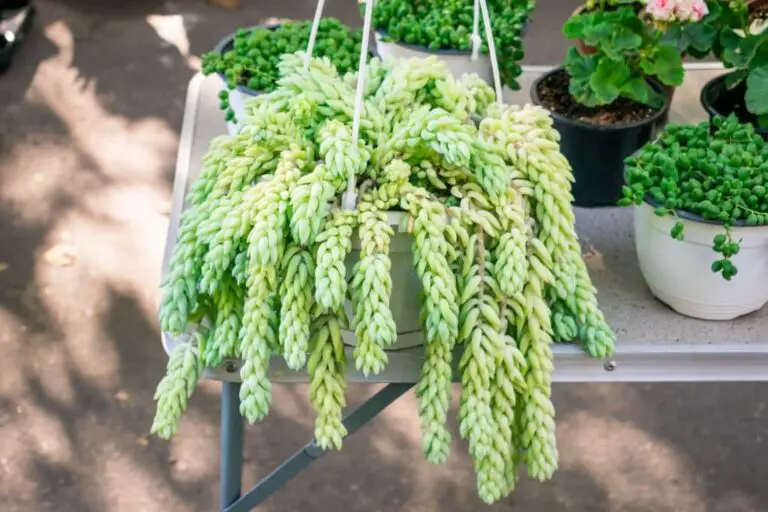26 Magnificent Trees With Purple Flowers: A Guide To The Best Ones
Get ready to be mesmerized by the breathtaking beauty of purple-flowering trees! Whether you’re a seasoned gardener or just starting out, these stunning plants are sure to captivate your senses. In this comprehensive guide, we’ll introduce you to an array of magnificent tree species that boast vibrant purple blooms, as well as share valuable tips on how to care for them.
From the iconic Bloomerang Lilac Tree to the exotic Silk Floss Tree, our list features 26 breathtaking varieties that will add a touch of elegance and charm to any landscape.
Bloomerang® Lilac Tree (Syringa ‘SMSJBP7’ PP26549).
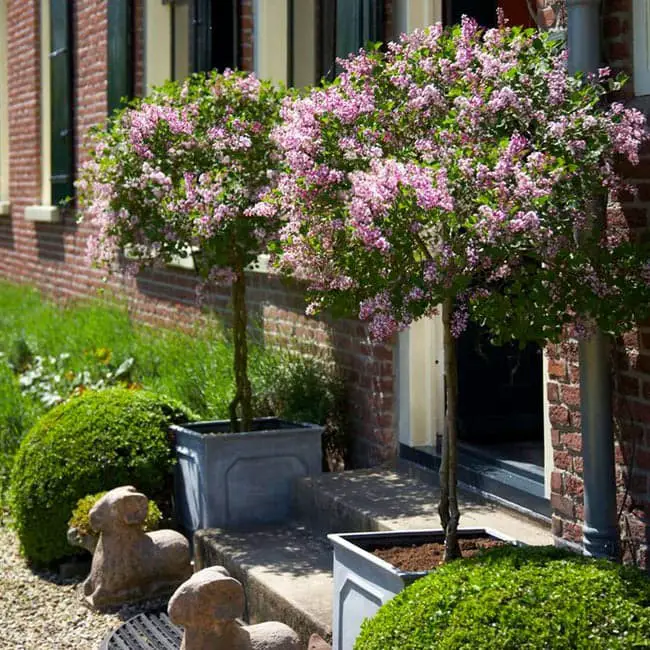
Discover the simplicity and beauty of the Bloomerang Lilac Tree, a deciduous shrub that bursts into bloom twice a year – once in early to mid-spring, and again in late summer. Its mature height and width reach approximately 15 feet, making it an impressive addition to any garden or landscape. This low-maintenance plant is perfect for those seeking the charm of lilacs without the laborious upkeep.
With its easy-to-grow nature, you can enjoy vibrant colors without worrying about constant replanting. As a bonus, the Bloomerang Lilac Tree is resistant to powdery mildew, making it an excellent choice for gardeners in areas prone to this disease.
Catawba Crape Myrtle Tree (Lagerstroemia indica ‘Catawba’).
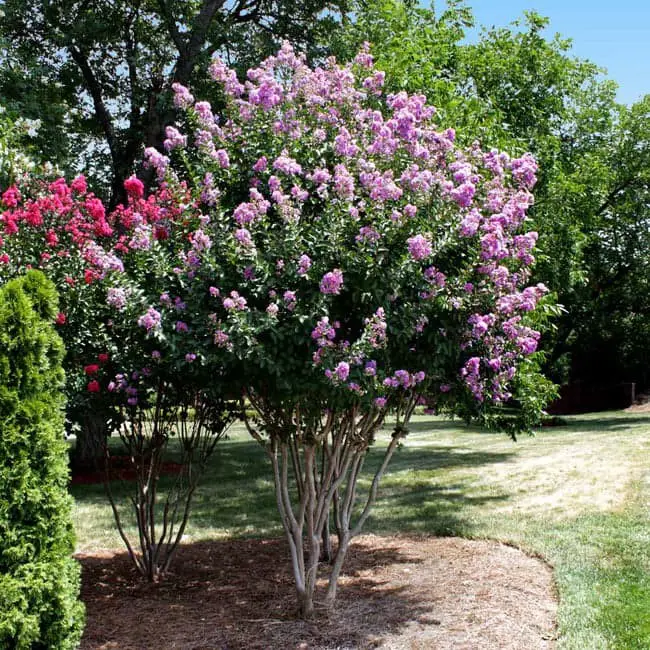
Standing at an impressive 30 feet tall and 20 feet wide, the Catawba Crape Myrtle Tree is a deciduous beauty that brings vibrancy to any landscape. Its dark green leaves transform into a kaleidoscope of colors in the fall, displaying shades of red, orange, and yellow. In the summer, the tree bursts forth with pink blooms, adding a touch of elegance. Native to China and Korea, this versatile tree is well-suited for landscaping.
Notably, it boasts impressive drought tolerance, thriving in full sun to partial shade. Moreover, the Catawba Crape Myrtle Tree has natural defenses against pests and diseases, making it a low-maintenance option that doesn’t require regular pruning. For those seeking an effortless addition to their outdoor space, this tree is an excellent choice.
Chaste Tree (Vitex agnus-castus).
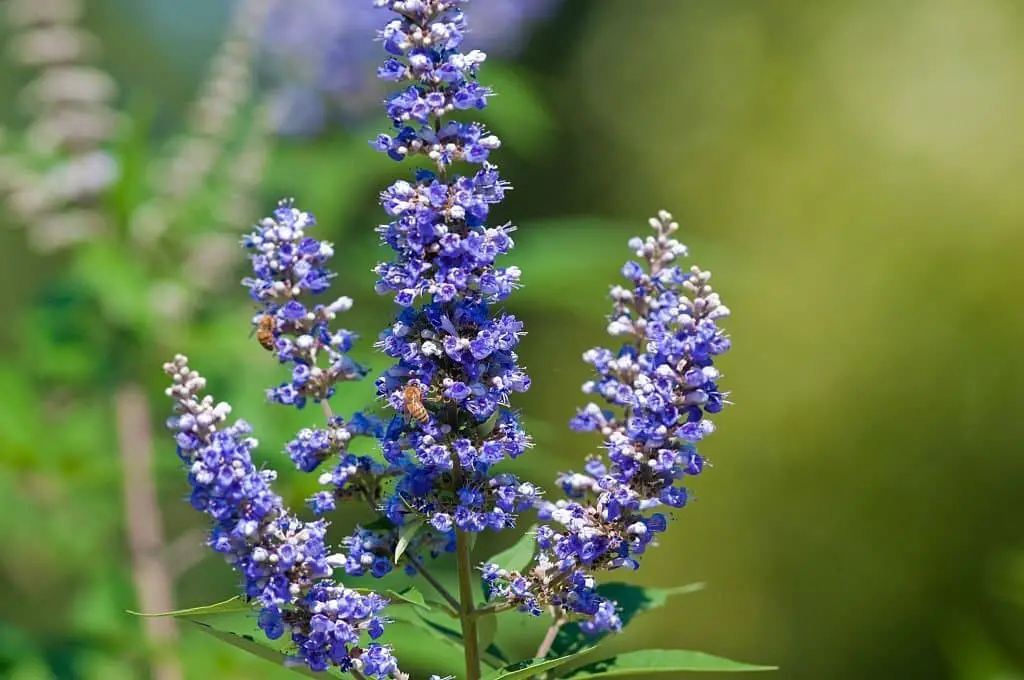
The Mediterranean native, Chaste Tree, is a deciduous shrub that thrives as a small to medium-sized plant. Its leaves are a striking feature, with five to seven leaflets arranged in opposite pairs. When the tree blooms, it produces small, white flowers that grow in terminal spikes. The fruit takes the form of a black drupe. Beyond its visual appeal, Chaste Tree has been prized for centuries for its medicinal properties.
In ancient Greece, Hippocrates recommended it for treating uterine issues, while Roman naturalist Pliny the Elder wrote that it was effective against snake bites and rabies. Today, the Chaste Tree remains a staple in herbal remedies, used to alleviate symptoms of PMS and menopause. It also finds use in treating acne and various skin conditions.
Desert Willow (Chilopsis linearis).
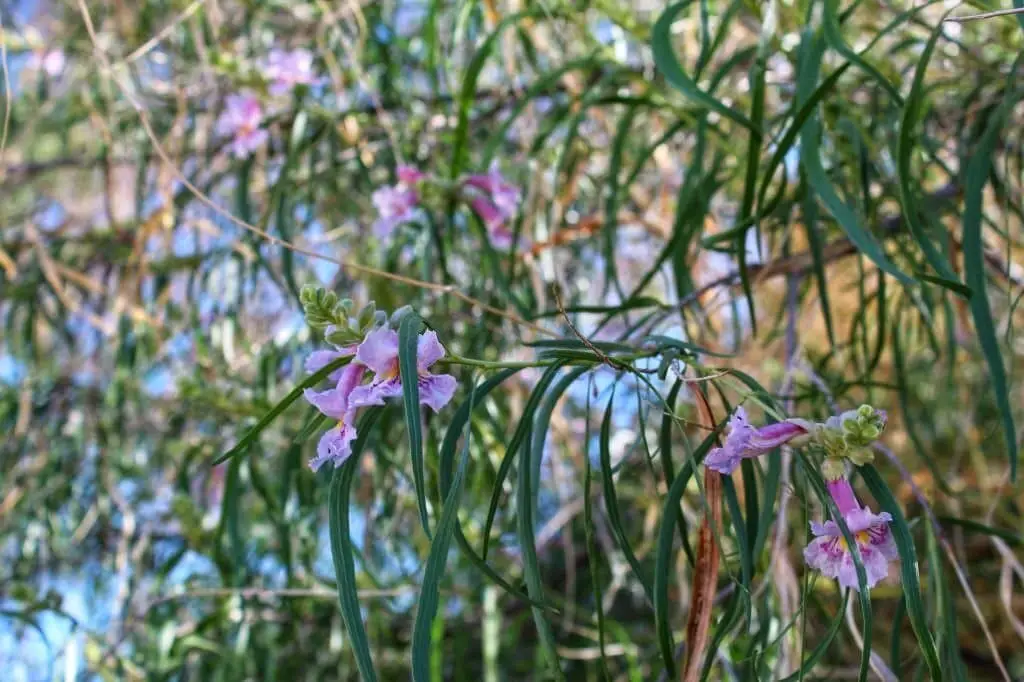
The Desert Willow, a deciduous tree, boasts an impressive display of long, pendulous flowers in shades of lavender to purple. Its robust height range of 20-30 feet is complemented by a vase-shaped crown that adds visual interest to any landscape. Thriving in full sun and requiring minimal watering once established, this fast-growing shade tree excels in desert environments.
Beyond its practical uses as a shade provider, the Desert Willow also makes for an attractive specimen planting or can be used to create a natural windbreak or privacy screen. Native to the southwestern United States and northern Mexico, this versatile tree is an excellent choice for those seeking a low-maintenance yet visually striking addition to their outdoor space.
Dogwood (Cornus Florida).
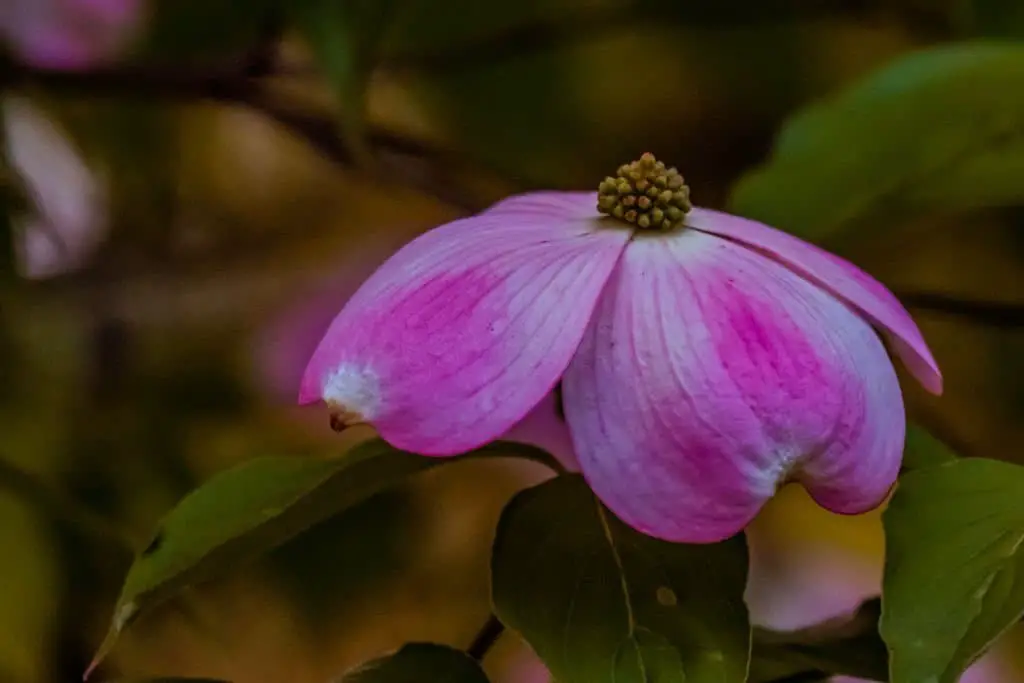
Dogwood trees boast breathtaking floral displays that set them apart from other arboreal wonders. Native to the southeastern United States, these trees can be found in a kaleidoscope of colors, with white being the most prevalent hue, although pink, purple, and red varieties also exist. One of the first trees to burst into bloom come springtime, dogwoods’ flowers can remain vibrant for up to six weeks, painting the landscape with their beauty.
Eastern Redbud (Cercis canadensis).
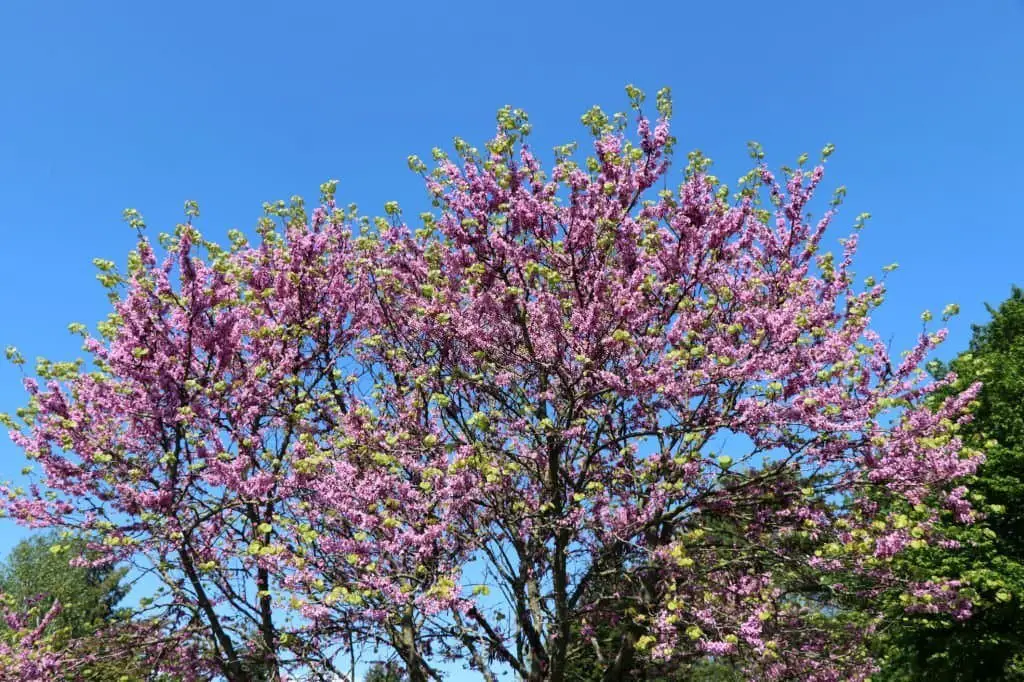
The Eastern Redbud is a deciduous tree that reaches heights of 20-30 feet, boasting a rounded crown and sprawling branches. Its leaves are alternate, heart-shaped, and often display a striking purple hue. In early spring, clusters of pink or white flowers emerge at the tips of its branches, while late summer brings the ripening of small, dark brown or black pods.
Native to eastern North America, this tree thrives in woodlands, on hillsides, and along hedgerows, tolerating a range of soil types but performing best in well-drained soils. When planted in full sun to partial shade, Eastern Redbud excels as a specimen tree, mass planting, or naturalized area.
Fragrant Lilac (Syringa vulgaris).
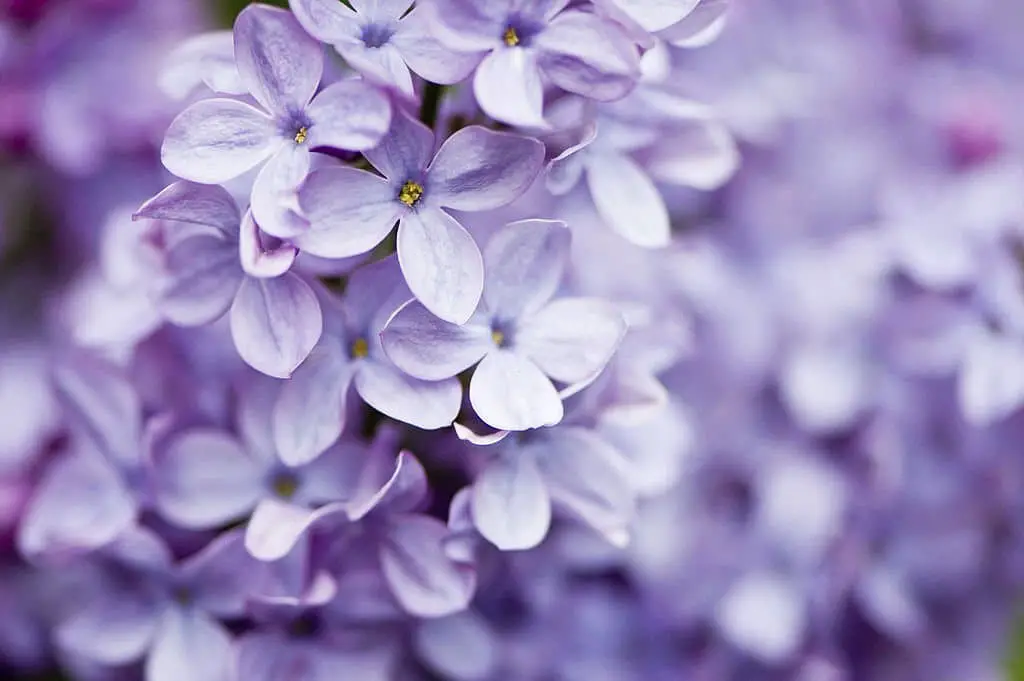
The lilac is a deciduous shrub or small tree with a sprawling, multi-stemmed habit that typically reaches 15-30 feet tall. Although it’s native to the Balkan Peninsula, it has been widely cultivated and introduced throughout Europe and parts of Asia. Its distinctive flowers are highly fragrant and bloom in dense clusters in late spring. Each flower features four petals and a tubular shape with a prominent style, often displaying hues of lavender, white, or pink.
Some cultivars boast purple blooms as well. The foliage is opposite, ovate-lanceolate to oblong-ovate, and dark green, transitioning to a vibrant yellow in fall. As the flowers fade, round, greenish-yellow fruits develop in late summer, ripening to brown. Each fruit contains a single seed.
Hibiscus Tree.
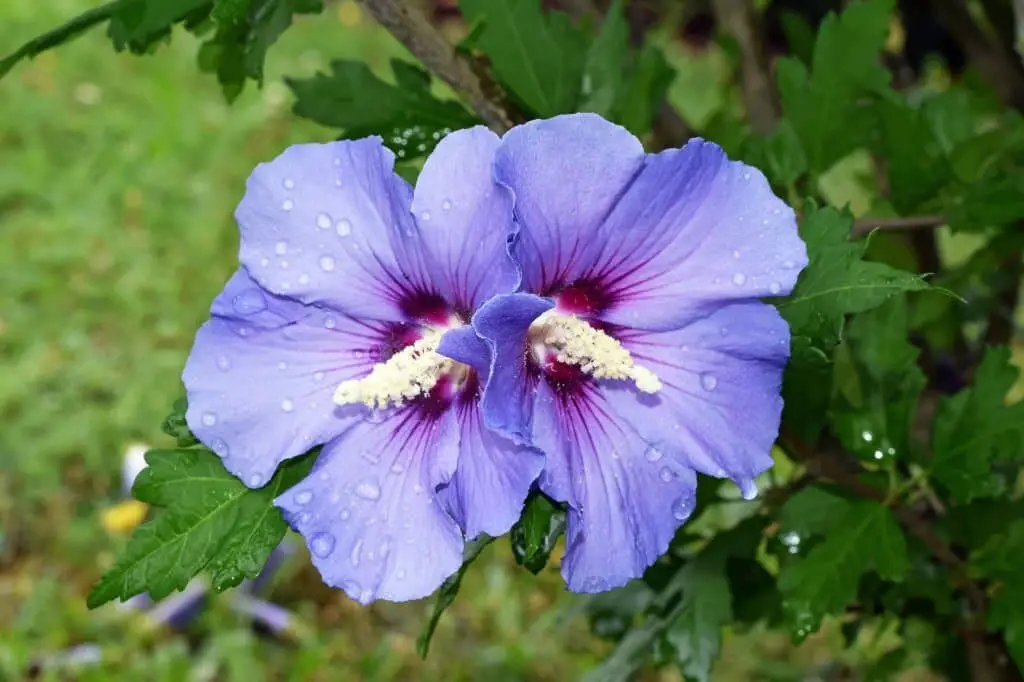
The Hibiscus tree, native to tropical Asia, boasts a majestic presence, with its towering height reaching up to 20 feet. Its large, dark green leaves provide the perfect backdrop for the star attraction – the stunning flowers. These vibrant blooms, measuring in at impressive sizes, boast a deep purple hue that adds an extra layer of beauty to this already breathtaking tree.
Jacaranda Tree (Jacaranda mimosifolia).
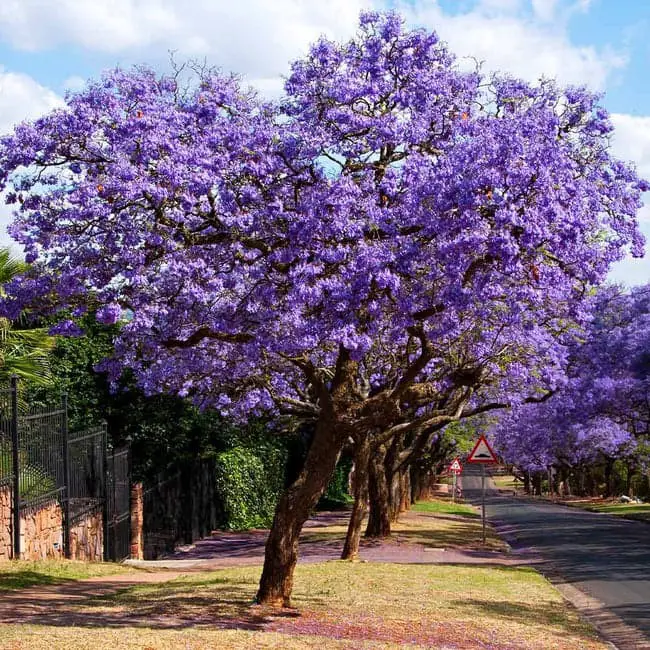
The Jacaranda tree is an awe-inspiring sight to behold, with its slender leaves and vibrant purple flowers reaching up to 30 feet tall. Its rapid growth rate allows it to flourish under the right conditions. Notably, this stunning tree produces its showy blooms from late spring to early summer, often finding its way into beautiful floral arrangements. As a native of South America, the Jacaranda has adapted well to its new home in the southern United States, where it is widely cultivated.
Furthermore, the Jacaranda tree’s drought tolerance and ability to thrive in diverse soil types make it an attractive option for gardeners seeking low-maintenance yet visually striking additions.
Korean Lilac Tree (Syringa meyeri ‘Palibin’).
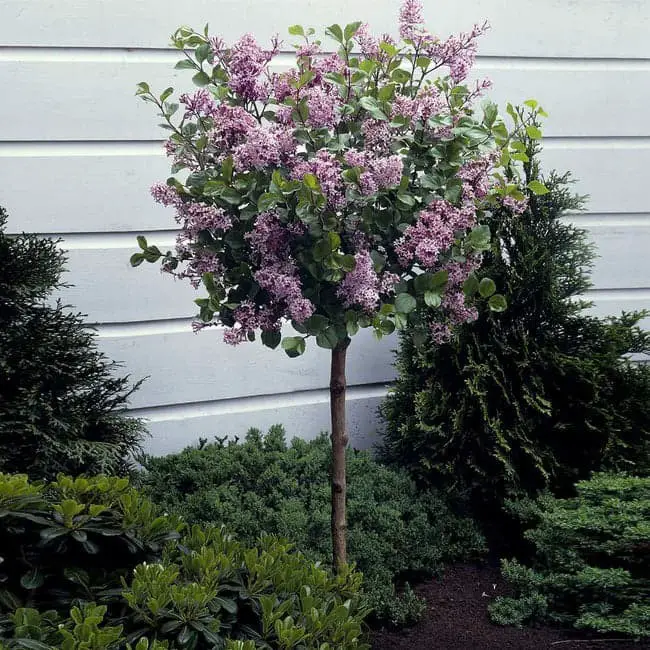
The Korean lilac tree is a deciduous shrub that typically grows up to 15-20’ tall with a spreading, multi-stemmed habit. Its ovate to obovate leaves are a deep green color. One of the most notable features of this shrub is its showy flowers, which are tubular, fragrant, and borne in long panicles (up to 12” long). Following the bloom, dry, woody seed capsules develop. This versatile shrub is often used as a specimen or in mass plantings, and can thrive in a variety of conditions.
It tolerates full sun to part shade, with the best flowering occurring when planted in full sun. The Korean lilac tree is native to Korea and northeast China, having been introduced to the United States in 1909. In terms of hardiness, it grows well in zones three through eight. When it comes to soil, this shrub prefers moist, well-drained conditions. To establish a strong root system during its first growing season, regular watering is essential.
Once established, the Korean lilac tree is surprisingly drought-tolerant. For optimal growth and flowering, fertilize with a balanced fertilizer such as 12-12-12 in early spring. Pruning should occur in late winter to early spring before new growth begins, where you can remove any dead or damaged stems, weak or crossing stems, and thin out the shrub to promote good air circulation.
Lavender Twist® Redbud (Cercis canadensis ‘Covey’).
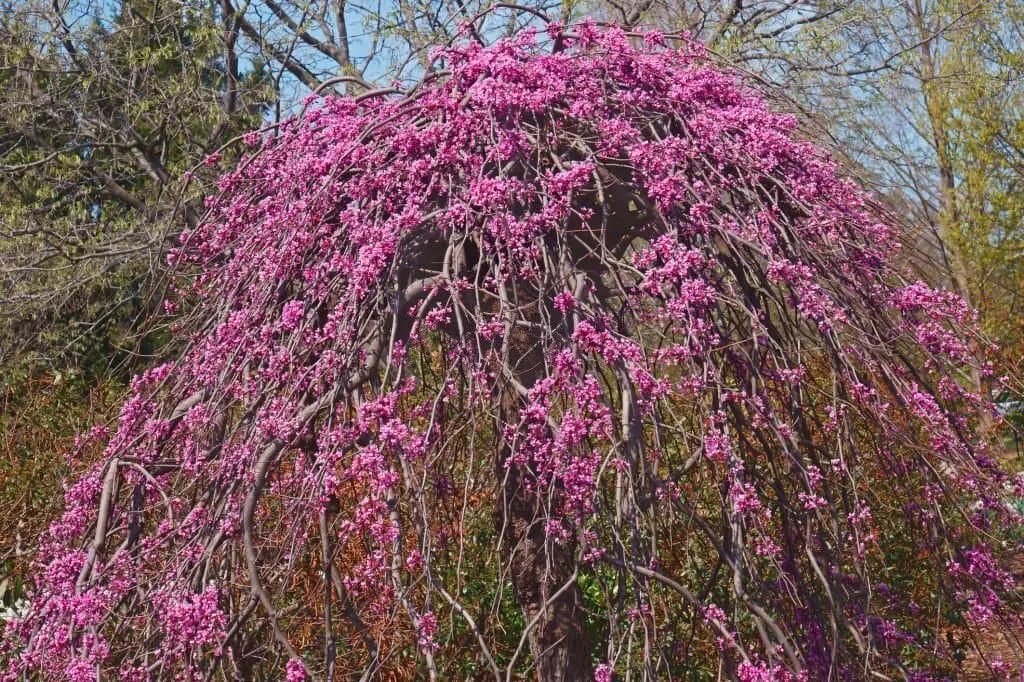
This stunning deciduous shrub or small tree bursts forth with vibrant lavender-pink flowers in early spring, preceding the emergence of its dark green, heart-shaped leaves. As fall arrives, these leaves transform into a warm yellow-gold hue. The Lavender Twist Redbud thrives in conditions that offer full sun to partial shade and well-drained soil. Boasting low maintenance requirements, it is also surprisingly resilient in urban settings.
While its natural beauty makes it an ideal specimen plant or addition to mass plantings or foundation plantings, the Lavender Twist Redbud also excels as a choice for planting beneath power lines, where its compact growth and adaptability truly shine.
Magnolia ’Royal Purple’ (Magnolia x soulangeana).
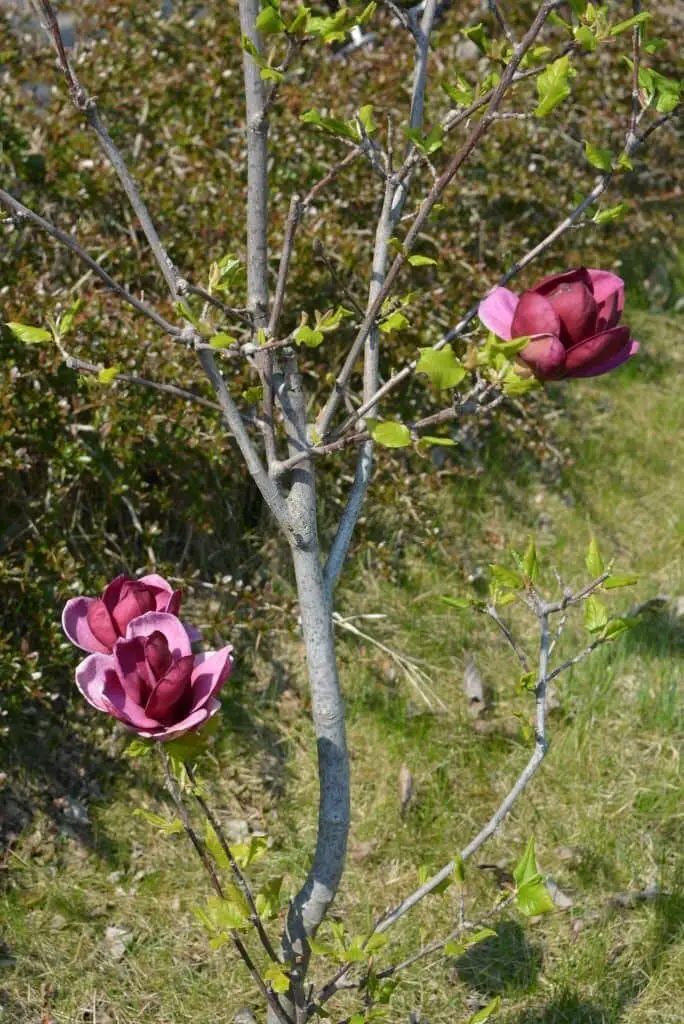
A cross between two species of flowering magnolia, ‘Jane’ was first introduced in 1963. Reaching heights of around 20 feet tall and wide, this cultivar boasts stunning deep purple blooms that emerge early in the spring season. The leaves of ‘Jane’ are a rich, dark green hue with a glossy finish, while its robust health is characterized by natural disease resistance.
Mountain Laurel (Kalmia latifolia).
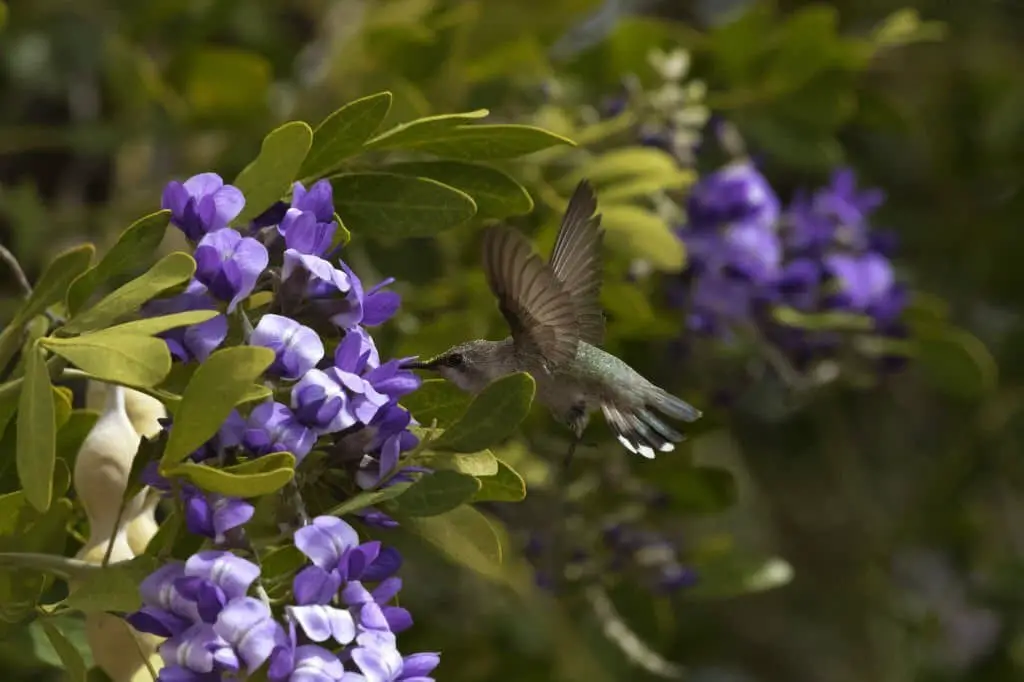
Mountain Laurel, a perennially popular choice among gardeners, boasts an impressive display of pink, white, or purple flowers during the spring and summer seasons. Native to North America’s Appalachian region, this evergreen shrub thrives in mountainous areas. Reaching heights of up to 15 feet, Mountain Laurel’s glossy, dark green leaves are a striking feature, complemented by clusters of fragrant blooms that release a sweet, delicate scent.
As an easy-to-maintain and drought-tolerant option, Mountain Laurel has become a staple in many landscaping designs. It can flourish in both full sun and partial shade conditions, making it adaptable to various environments. While preferring acidic soil, this resilient shrub can also thrive in neutral or alkaline soils, providing gardeners with flexibility when selecting the ideal spot for their Mountain Laurel.
Muskogee Crape Myrtle Tree (Lagerstroemia indica x fauriei ‘Muskogee’).
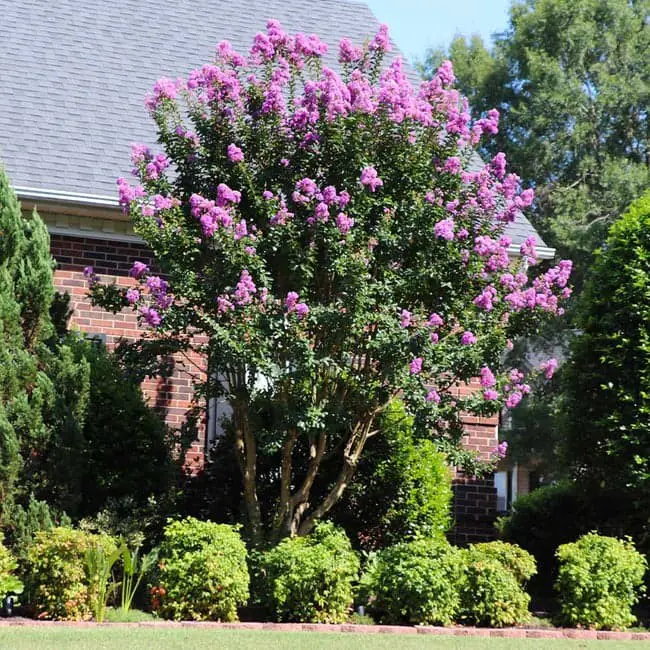
The Muskogee Crape Myrtle is a versatile deciduous shrub or small tree that thrives in USDA zones seven through nine. It boasts a statuesque presence, reaching heights of 20-30 feet tall and wide, with glossy, dark green leaves that transform into a fiery crimson hue during the fall season.
This stunning tree’s floral display is just as impressive, featuring vibrant purple, lavender, or white blooms that burst forth in the summer months.
Moreover, its drought tolerance makes it an excellent choice for areas prone to dry spells. When it comes to lighting conditions, the Muskogee Crape Myrtle does best in full sun, making it a great option for south-facing gardens.
As an added bonus, this tree is incredibly hardy and can withstand the rigors of urban environments, making it an ideal choice for mass plantings, specimen plants, or even as a hedge, screen, or privacy fence.
Its heat tolerance also makes it a popular selection for street trees or parking lot landscaping.
Orchid tree (Bauhinia variegata).
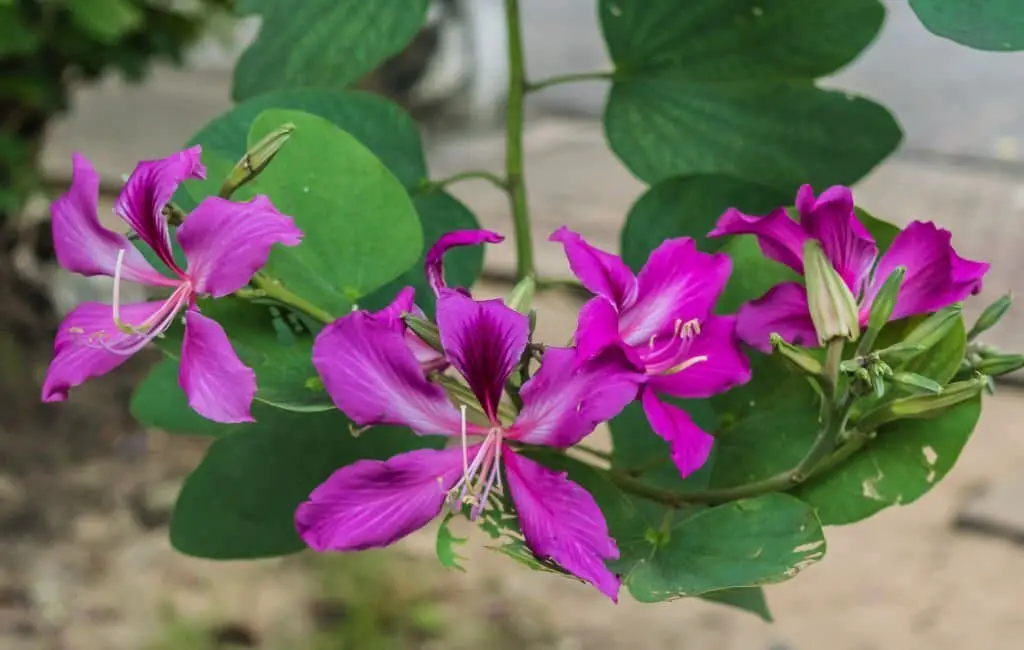
The orchid tree, a member of the pea family (Fabaceae), is native to tropical and subtropical regions of India, China, Nepal, and Bhutan. Its widespread cultivation as an ornamental plant in warm climates has led to its introduction in California and Texas, United States. This deciduous tree can grow up to 15 meters (50 feet) tall, characterized by reddish-brown to grey bark.
The leaves are imparipinnate, measuring 20-40 centimeters (12 inches) long and 15-25 centimeters (12 inches) broad, with eight to ten pairs of oval to oblong, glossy dark green leaflets. The showy flowers feature five petals and bloom in racemes up to 30 centimeters (12 inches) long from late winter to early summer. The fruit is an elongated pod reaching up to 60 centimeters (24 inches) long, containing several seeds.
Purple Leaf Plum (Prunus cerasifera).

The Purple Leaf Plum, a deciduous tree, typically reaches heights of 15-25 feet. Its striking features include purple leaves and white flowers with a subtle pinkish hue, while its fruit takes the form of small, dark plums. Native to Europe and Asia, this species has been successfully introduced to North America. When it comes to environmental conditions, the Purple Leaf Plum thrives in full sun but can adapt to partial shade.
It prefers well-drained soil, though it’s equally adept at tolerating clay or sandy textures. Once established, this tree exhibits remarkable drought tolerance. With its unique characteristics and versatility, the Purple Leaf Plum makes an excellent choice for any landscape design.
Purple Lily Magnolia (Magnolia liliflora).
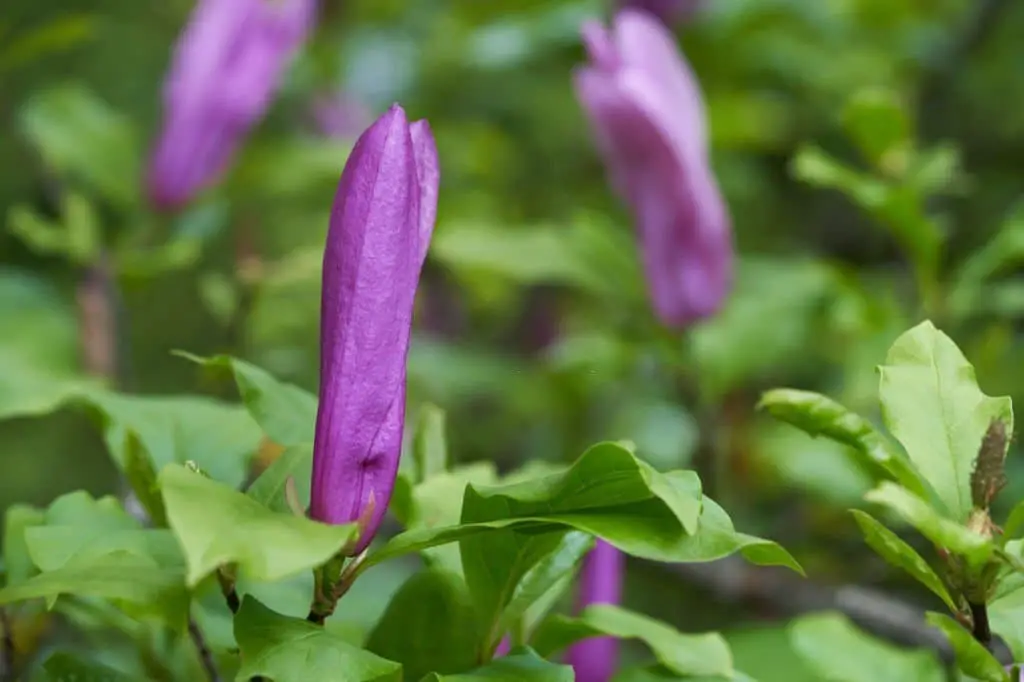
Native to China, the majestic Purple Lily Magnolia can reach heights of up to 20 feet, its stunning blooms a deep purple hue that exudes a sweet fragrance. This vibrant tree typically bursts into bloom in late spring or early summer. With its robust nature and low maintenance requirements, it’s an ideal choice for adding a pop of color and elegance to your landscape. Its remarkable resistance to pests and diseases only adds to its appeal.
Purple Robe Locust (Robinia pseudoacacia ‘Purple Robe’).
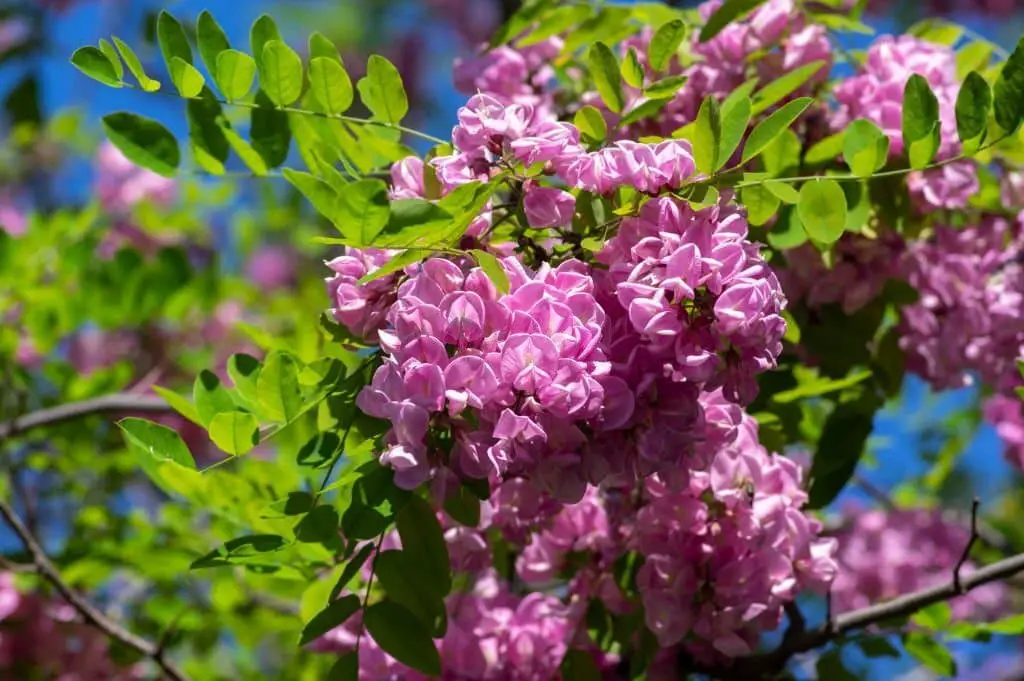
The Purple Robe Locust boasts stunning clusters of fragrant, deep purple blooms in early to mid-spring. This deciduous tree’s rapid growth habit allows it to reach impressive heights of 40 feet, with a mature spread of 30 feet. When provided with full sun, it thrives in a variety of soil types, including clay. Once established, the Purple Robe Locust is also remarkably drought tolerant. Its versatility makes it an excellent choice for both fast-growing shade trees and flowering privacy screens.
Purple Wisteria Tree.
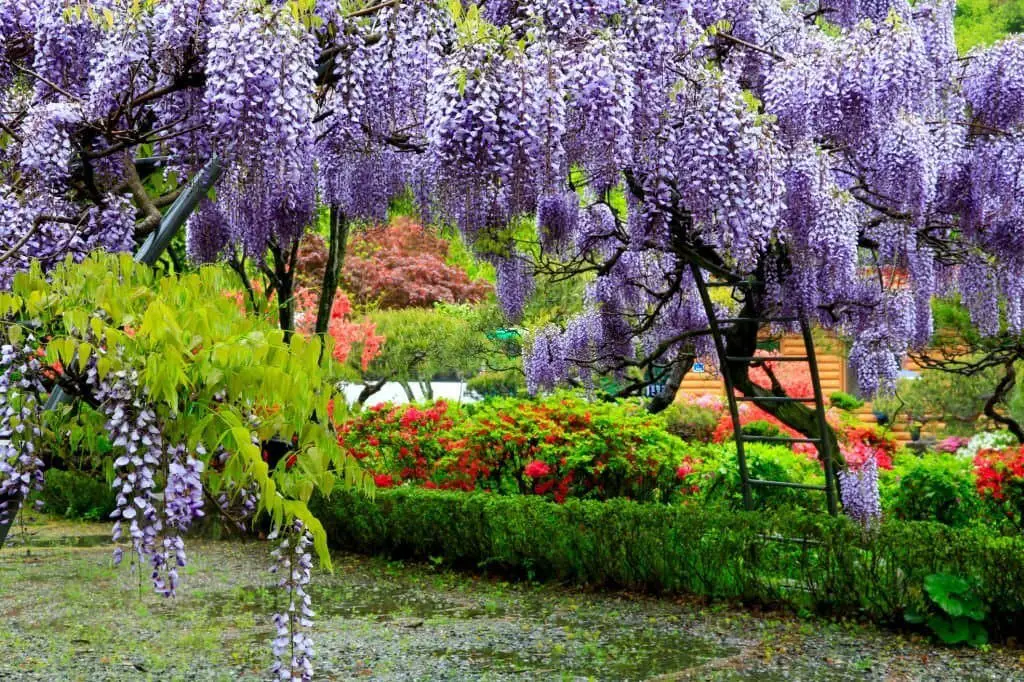
The Purple Wisteria Tree, a deciduous species native to China, is characterized by its remarkable growth habits. Reaching heights of up to 30 feet, this tree boasts a lifespan of approximately 100 years. The standout feature of the tree is its vibrant purple flowers, which emit a sweet fragrance and bloom for roughly two weeks during the springtime. As the flowers wane, the tree produces seed pods that stretch around six inches in length.
A popular choice for ornamental landscaping, the Purple Wisteria Tree has earned a reputation for being remarkably resilient and low-maintenance. Its ability to thrive on a wide range of soil types, combined with its tolerance for drought conditions, makes it an attractive option for gardeners. While it prefers full sun, the tree is also capable of flourishing in partial shade.
Royal Empress Tree (Paulownia Tomentosa).
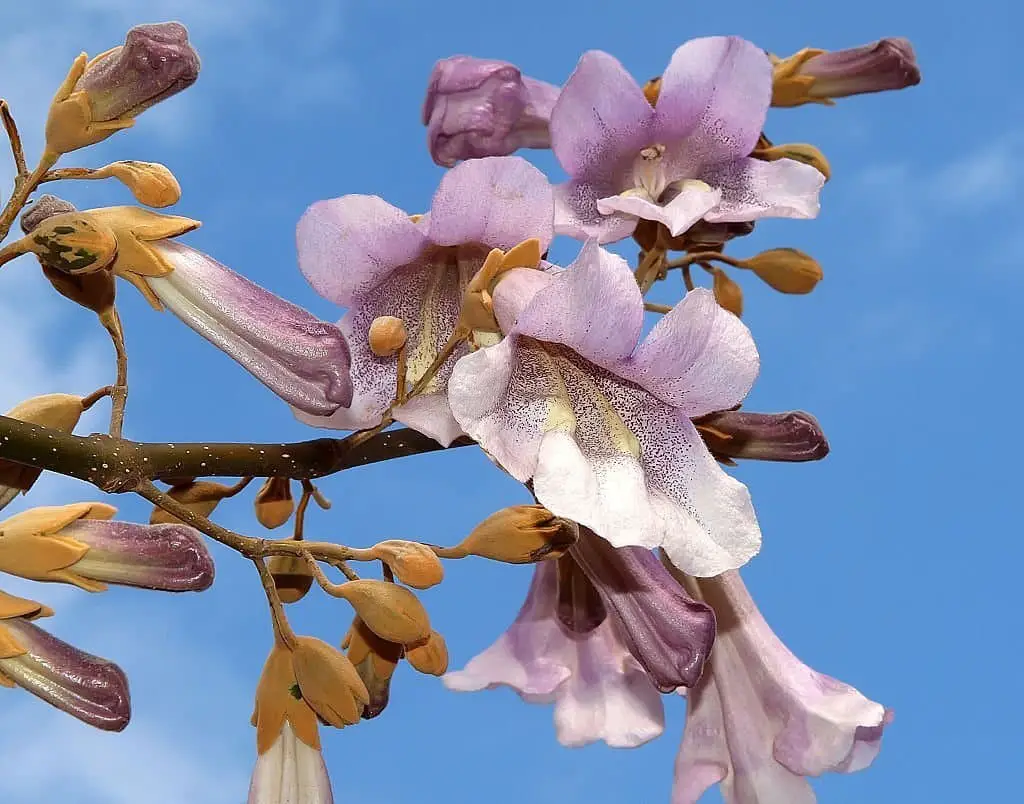
Native to central and western China, the Royal Empress Tree has since spread its roots to other parts of the world. Its rapid growth habit allows it to reach impressive heights of up to 100 feet. A distinguishing feature of this tree is its large, heart-shaped leaves and vibrant purple flowers that burst forth in springtime. When in full bloom, the Royal Empress Tree is a breathtaking sight, making it an excellent choice for any landscape.
Although relatively low-maintenance, the tree thrives in a variety of soil conditions and can tolerate partial shade or full sun. Its drought tolerance means it requires minimal watering once established, making it an ideal addition to any garden or yard.
Royal Purple Smoke Tree (Cotinus coggygria ‘Royal Purple’).
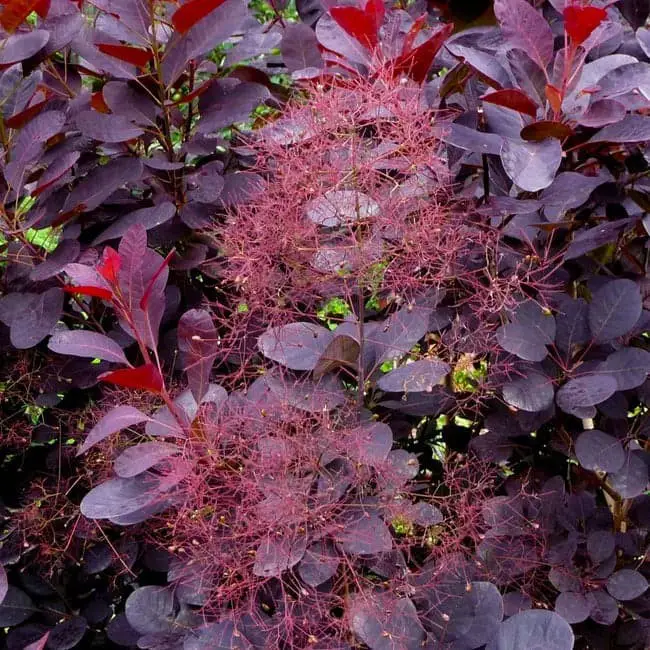
Indulge in the breathtaking beauty of the Royal Purple Smoke Tree, a Mediterranean native that thrives in full sun and well-drained soil. This stunning tree is covered in rich purple flowers from late spring to early summer, a sight truly fit for royalty. As it grows up to 20 feet tall with a spread of 15 feet, its unique features only become more striking.
The tree’s deep purple blooms are followed by an equally impressive display of greenish-purple fruits that ripen in late summer and transform into a warm brown hue come fall. These tantalizing treats prove irresistible to birds and other wildlife, making the Royal Purple Smoke Tree a haven for nature enthusiasts and backyard bird-watchers alike.
Silk Floss Tree (Ceiba speciosa).
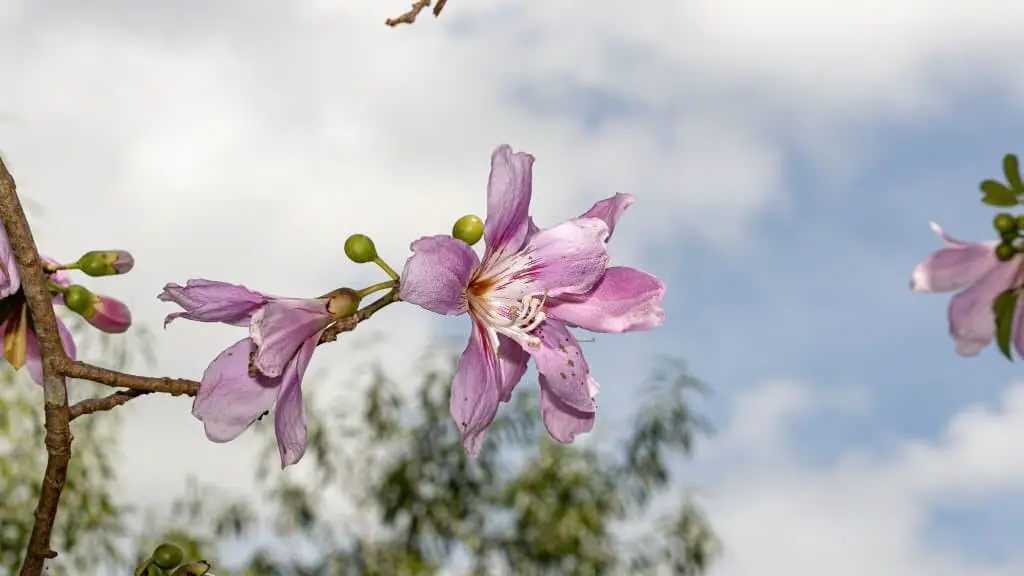
In the lush rainforests of South America, the majestic Silk Floss Tree stands tall, its vibrant purple blooms a striking sight to behold. As a member of the bombacaceae family, this tree is closely related to the kapok tree, with some species reaching heights of up to 30 meters. The Silk Floss Tree’s robust trunk is protected by a dense covering of thorns, effectively discouraging animals from attempting to climb its towering form.
Instead, bees and other insects are attracted to the tree’s flowers, which they use as a vital source of sustenance. Similarly, birds and small mammals rely on the tree’s fruit as a nourishing food source. The Silk Floss Tree plays a pivotal role in supporting the rich biodiversity of the rainforest ecosystem, providing shelter for ants, beetles, and other insects within its expansive leaves.
The tree’s nectar-rich flowers also serve as a vital energy source for pollinators, further solidifying its importance within this delicate ecological balance.
Takasago Flowering Cherry.
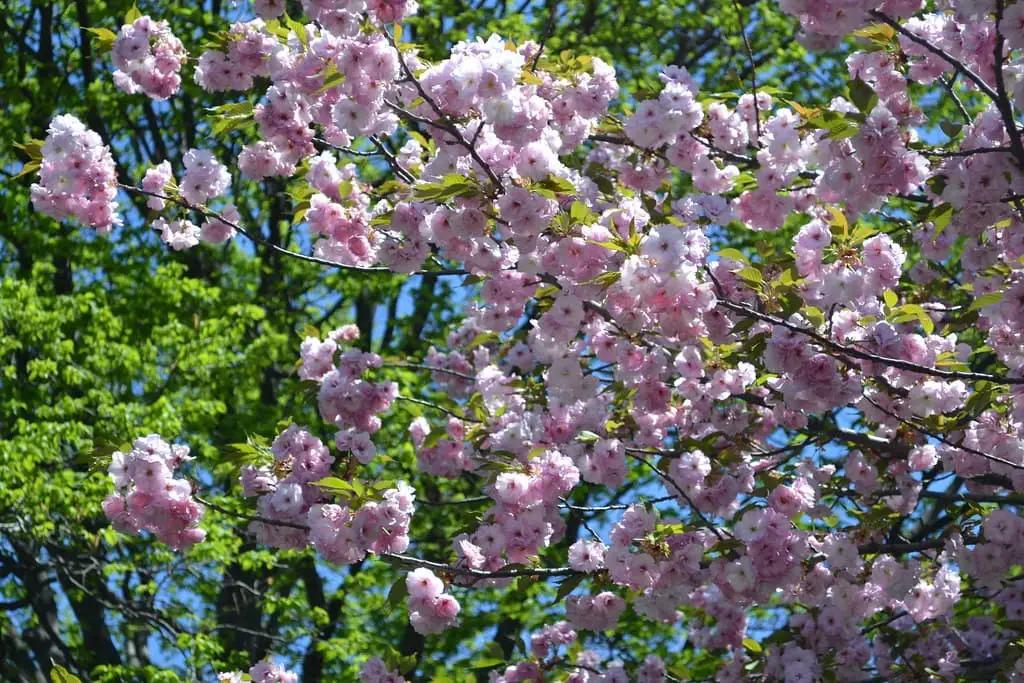
In Japan, a stunning symbol of beauty and national pride is the Takasago Flowering Cherry tree. This deciduous tree can reach impressive heights of 20 meters (66 feet), its dark green leaves providing a striking backdrop for the majestic display of deep purple flowers that bloom in late spring and early summer. A popular sight in public parks and gardens, the Takasago Flowering Cherry is not only a beloved fixture in Japanese landscapes but also holds the esteemed title of national flower.
True Blue Butterfly Bush (Buddleia ‘Bostulu’).
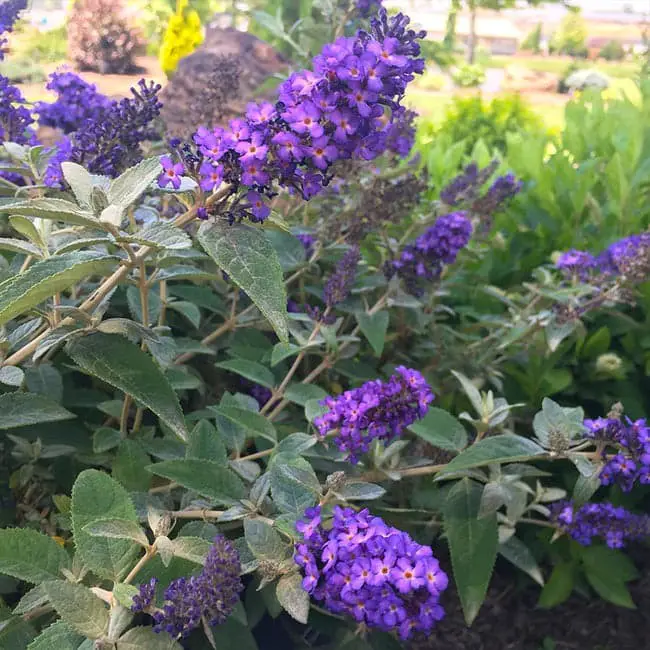
With its vibrant purple blooms drawing in butterflies all summer long, this True Blue bush is a stunning addition to any outdoor space. Not only does it boast an impressive blooming season, but it’s also impressively resilient, thriving in hot and dry conditions once established.
Reaching heights of around six feet tall and spreading out approximately four feet wide, this shrub makes a fantastic focal point or border for your garden, adding a pop of color and life to the surrounding area.
Twilight Crape Myrtle (Lagerstroemia indica ‘Twilight’).

This deciduous shrub or small tree stands out with its vase-shaped habit, reaching heights of 15-20 feet tall. Its most notable feature is the fragrance and deep lavender hue of its flowers, which bloom during summer and linger into fall. The leaves are a medium green color, oblong to ovate in shape, and turn yellow as the seasons transition. A superior cultivar, ‘Twilight’ boasts large flowers that bloom for an extended period and display vibrant fall colors.
Its development is attributed to the National Arboretum in Washington, D. C., which carefully selected and introduced this variety.
Vitex Chaste Tree (Vitex agnus castus).
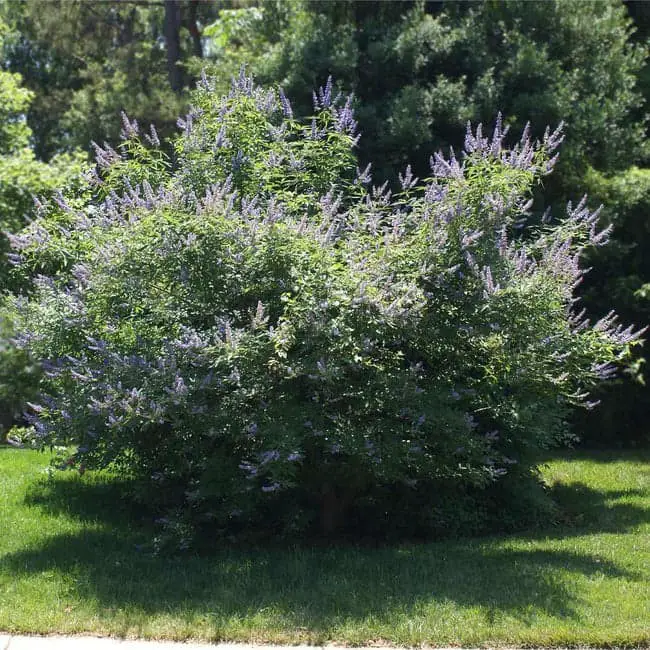
The Vitex Chaste Tree, also known as the monk’s pepper tree, has been a part of English landscapes since its introduction in 1548. This deciduous tree is capable of reaching heights and widths of up to 20 feet, making it an impressive addition to any garden. Its pinnate leaves feature five to seven ovate-oblong leaflets that grow opposite one another on the stem.
The tree’s vibrant lavender-blue flowers bloom in clusters at the ends of its branches from June to September, creating a stunning display of color. A fast-growing and resilient species, the Vitex Chaste Tree can thrive in a variety of conditions, including drought-prone soil and coastal areas where salt spray is present. Its adaptability makes it an excellent choice for gardeners looking to add some unique beauty to their outdoor spaces.
Conclusion
As we’ve explored together, discovering the best trees with purple flowers requires a thoughtful approach. By considering factors such as climate, soil type, and maintenance requirements, you can find the perfect tree to enhance your outdoor space. Whether you’re looking to create a stunning focal point or add some subtle beauty to your landscape, this guide has provided valuable insights to help you make an informed decision.
If you have any questions or would like to share your own experiences with these lovely trees, please don’t hesitate to leave a comment below. Your feedback is greatly appreciated, and we’re always here to learn and improve.
Related Posts
When it comes to flower delivery, tipping your courier is a common practice. But how much should you leave? The amount of gratuity depends on various factors such as the type of flowers, their complexity, and the level of service provided. As a general rule, a 10% to 15% tip is considered standard for most flower delivery services. However, if your courier went above and beyond to ensure your order was delivered efficiently and with care, you may consider leaving a slightly higher gratuity.
After all, they’re the ones who made sure your loved one received their beautiful bouquet on time.






